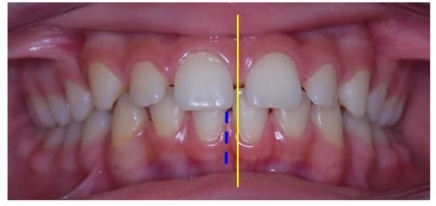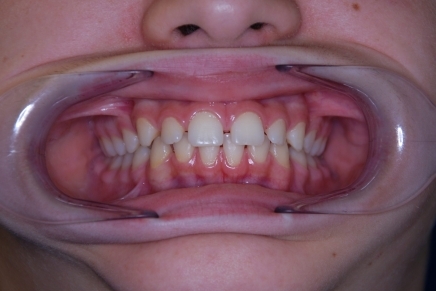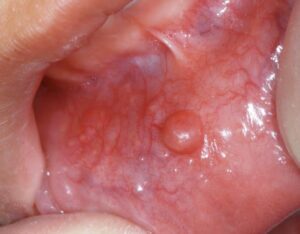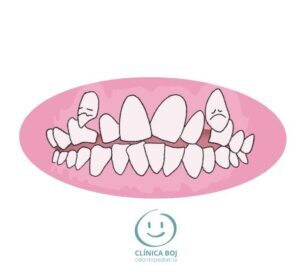What is diastema: causes and treatments
Diastema is to have a gap between teeth. Sometimes, families are worried about the appearance of the gaps present with a diastema on their kid´s teeth. This can happen both on primary teeth or permanent teeth.
Is it normal for kids to have gapped teeth?
We know as diastema the space that separates two adjacent natural teeth or when these teeth do not contact each other.
These are also commonly known as “gaps between teeth”, especially between the upper front teeth, giving a “gapped teeth” appearance.

Can diastema get fixed by itself?
Diastema is common in children during temporary dentition, or baby teeth. Nevertheless, it generally disappears as they grow and acquire the permanent dentition. In adolescents or young people, with the eruption of the upper canines, the gaps, or interdental spaces, usually close.
The pediatric dentist is trained and prepared to assess and treat the gaps that appear in pediatric patients’ teeth when necessary.
How common is diastema?
It is quite common among children.
There are several causes that can lead to the appearance of gapped teeth in children, teenagers and young people:
Supernumerary teeth:
The mesiodens, which are the most frequent supernumerary teeth, often generate spaces between the maxillary central incisors. The presence of these “extra” teeth is confirmed with a periapical, occlusal, or panoramic radiograph.
Dental agenesia:
A common case is the lack of upper lateral incisors. This causes an increase in the space between the upper central incisors or diastema.
Eruptive disorders:
Miscellaneous eruption disorders, such as those related to:
a) primary dentition trauma,
b) ectopic eruption, or
c) genetic factors that accelerate or delay tooth eruption.
Learn more about our dental esthetics services for children and adolescents.
Loss of teeth:
The spaces that appear after the loss of a tooth can be extended and distributed to neighboring areas.
Digital suction:
The habit of “sucking the thumb” can cause a tilt of the upper incisors. With it, an inter-incisor gap can also appear.
Tongue hyperactivity or macroglossia:
Excess pressure (tongue thrusting) and/or lingual size of the tongue causes an imbalance between the lingual and perioral musculature.
It happens in such a way that the dental arches increase their perimeter. In other words, the bone that supports or arch lenght has more space than before and teeth separate.
Fissure cyst of the nasopalatine duct:
Although it is a rare pathology, it is also related in some cases to “gapped teeth”.
Positive bone-dental discrepancy:
The length of the maxillary arch is greater than the sum of the mesio-distal diameters of the teeth. This causes a gapped appearance because teeth have more space than needed.
Microdontia:
Microdontia is an abnormality in tooth size (teeth are too small or big) and can be generalized or localized. The generalized ones show the presence of multiple gaps unequally distributed in the two dental arches. The localized ones are many times located in some upper lateral incisors, that are smaller than normal.
Upper lip frenulum:
Sometimes, the maxillary labial frenulum is too large and is inserted occupying part of the space between the maxillary central incisors. This situation can cause a gap, thus separating the teeth.
Some children can have a oversized labial frenum and the risk for larger gaps is present.
Incorrect swallowing reflex:
Can produce tooth gaps in children and adults. Depending on how much the tongue presses the front teeth, gaps may be small or large.
Also, to put pressure on the front teeth can produce gum disease. This may even become advanced gum disease if it acts for a long time without correction.
How can diastema be corrected?
First of all, the cause should be identified to achieve a diastema closure.
If the cause is related to the presence of a hypertrophic or low-insertion frenulum, an evaluation is needed. One of the therapeutic options that the pediatric dentist may propose is the surgical intervention.
Some cases need both, the surgical removal of the frenum and orthodontic treatment.

Luckily, a dental gap does not represent risks to oral health. However, some families and patients choose to undergo treatments to improve the appearance of their smile.
What is the best treatment for gaps in teeth?
Fortunately, there are also different treatment options for bringing separated teeth together. Among them, we can mention:
a) conventional orthodontics with braces,
b) invisible orthodontics,
c) aesthetic composite resin (tooth bonding or dental bonding),
d) ceramic or porcelain veneers,
e) dental crowns, or
f) dental implants with crowns.
How to close a diastema without braces?
In the cases in which it is indicated, surgery will be chosen, eliminating the frenulum. This surgery can be performed with laser or conventional surgery.
Therefore, depending on the origin or the cause we do not always opt for the use of orthodontics with braces.
In addition, there are currently different types of orthodontic treatments, such as invisible orthodontics. Therefore, traditional braces are no longer the only therapeutic alternative.
How long does it take to close a diastema?
Finally, treatment time for a diastema differs for each patient. It will depend on:
a) the type,
b) origin, or
c) cause of the gapped teeth,
as well as the therapeutic alternatives that can be chosen to get the desired final results for children, adolescents or young persons.
References:








